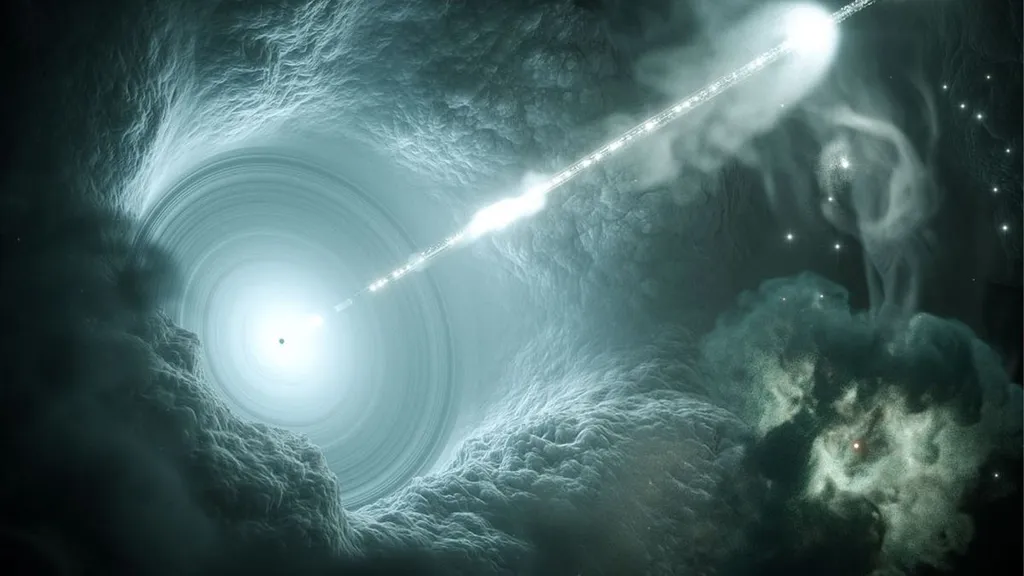In the realm of energy and particle physics, a team of researchers from the University of Hamburg, Germany, and the University of Jyvaskyla, Finland, has been delving into the prospects of observing neutrinos from binary neutron star mergers and measuring their mass. The researchers, Vedran Brdar, Dibya S. Chattopadhyay, Samiur R. Mir, Tousif Raza, and Marc S. Romanowski, have published their findings in a recent study.
Neutrinos are tiny, nearly massless particles that are incredibly difficult to detect due to their weak interaction with matter. However, they play a crucial role in understanding the fundamental workings of the universe. In the context of the energy sector, neutrinos could potentially be harnessed for communication in extreme environments, such as underwater or underground, where traditional electromagnetic signals struggle.
The team’s research focuses on two main aspects: the detection of neutrinos from binary neutron star mergers and the measurement of their mass. Binary neutron star mergers are cosmic events that produce both gravitational waves and neutrinos. The researchers found that current and near-future neutrino experiments are not sensitive enough to detect these neutrinos. Instead, they propose that megaton-scale detectors, such as the proposed Deep-TITAND, MEMPHYS, or MICA, with a threshold of around 10 MeV, would be required.
The researchers also highlight the importance of considering the time delay caused by the nonzero mass of neutrinos. This delay can significantly extend the observation windows for these neutrinos, allowing for a more accurate detection and analysis. They provide realistic estimates of the detector runtime required to record neutrinos from binary neutron star mergers with minimal background contamination.
Moreover, the relative timing between the neutrino and gravitational wave signals can be used to probe the scale of neutrino mass. The researchers found that this method could potentially exceed the sensitivity of current terrestrial bounds from the Karlsruhe Tritium Neutrino (KATRIN) experiment and projections based on galactic supernovae.
In practical terms for the energy sector, the ability to detect and measure neutrinos from cosmic events could lead to advancements in neutrino communication technologies. This could potentially revolutionize communication in extreme environments, such as deep underground or underwater energy facilities, where traditional communication methods are ineffective.
The research was published in the journal Physical Review D, a peer-reviewed scientific journal published by the American Physical Society. The study represents a significant step forward in our understanding of neutrinos and their potential applications in the energy sector.
This article is based on research available at arXiv.

